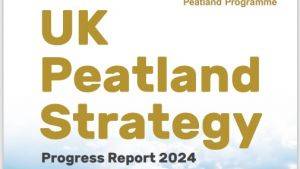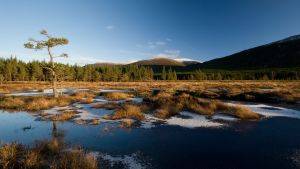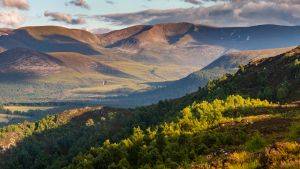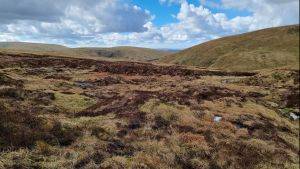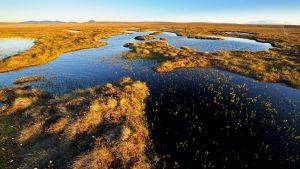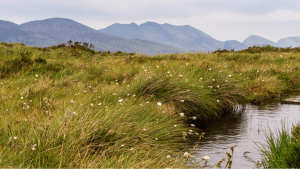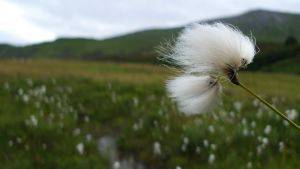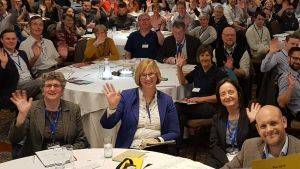The Flows (Bringing LIFE Back to the Bogs)
Introduction
The Flow Country is the common name for the vast peatlands bogs of Caithness and Sutherland – mainland Scotland’s most northern counties. Peat has been forming here for thousands of years and reaches, in places, up to five metres in depth. As well as storing over 400 million tonnes of carbon, this area is a stronghold for a wide variety of wildlife, such as otters, water voles, red deer, mountain hares, hen harriers, waders and waterfowl. After remaining largely untouched for millennia, the Flow Country has undergone a massive change in land use over the last 30 years. In the 1980s, vast areas of peatland habitats were destroyed or damaged through drainage and planting of commercial conifer plantations, despite having been naturally treeless for over 4,000 years. The unfortunate result was huge damage to the habitat and the disappearance of much of the special wildlife. Damage to the habitat also meant that instead of the peat bogs actively sequestering carbon from the atmosphere the peat is continuously degraded and emits carbon to the atmosphere.
Description
The Flow Country holds over 10% of the UK’s blanket bog, and almost 5% of the world’s resource, covering over 400,000 ha. Due to changes in land use over the years, we have lost or damaged much of this habitat. Together with partners, the Royal Society for the Protection of Birds (RSPB) is working to restore the Flow Country to its original state.
Project Aims
By tackling issues at a landscape scale, the current management strategy aims to cover the full ecological function of the peatlands and resolve different land-use pressures. For example, by identifying areas where trees could be planted, as well as areas for removal, it should be possible to create a sustainable forestry future in the area. This is a shared strategy across land managers, crofters, foresters and conservationists; working together for restoration.
Restoration Delivered
Practical restoration work has included blocking drains across 15,600 ha of blanket bog, (over 18,000 dams installed), and removing trees from 2,300 ha of former blanket bog. These activities have raised the water tables in the drained peatland and provided the conditions for bog mosses and other vegetation to recover. This prevents the loss of carbon to the atmosphere from the peat and allows the creation of new peat – turning the habitat back into a sink for carbon. In addition, restoring the bog habitat has attracted more wading birds like golden plovers, dunlins and greenshanks.
Site Activity
In 1988, following a major campaign led by the RSPB in Scotland and the Nature Conservancy Council, a network of SSSIs (Sites of Special Scientific Interest) was established to protect the Flow Country. This was followed in 1992 with the launch of a Peatland Management Scheme, funded by Scottish Natural Heritage (SNH), which involved making direct payments to land-owners and occupiers to support maintenance activities in this network of areas. In 2001, a partnership of RSPB, SNH, the Forestry Commission and Plantlife began a £2.8 million project, funded by the European LIFE programme, to bring conservationists and foresters together to restore damaged blanket bog at a landscape scale. The Scottish Government has also provided funds for peatland research and restoration in the Flow Country. The RSPB Forsinard Flows reserve was established in 1995 and lies in the heart of the Flow Country. Run by locally-based staff, the reserve is emerging as a major centre for research on peatland ecology, hydrology, carbon and restoration, in collaboration with many research institutes. Bog habitat condition is subject to extensive monitoring, including vegetation deer indices, birds and water tables. In addition to the research, Forsinard Flows attracts over 4,000 visitors each year, who contribute £190,000 to the local economy.
Project Name: The Flows (Bringing LIFE Back to the Bogs)
Organisation / Lead partner: RSPB
Location: Forsinard, Sutherland, Scotland
Approximate area covered: 400000 ha
Conservation Status: Site of Special Scientific Interest (SSSI), Special Area of Conservation (SAC), Special Protection Area (SPA), Nature Reserve (NR)
Predominately: Upland
Peat Habitats: Blanket bog
Project Type: Restoration, Management
Year Project Began: 1995


